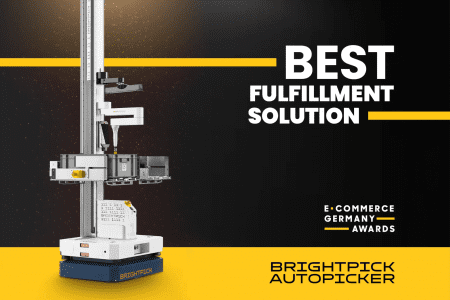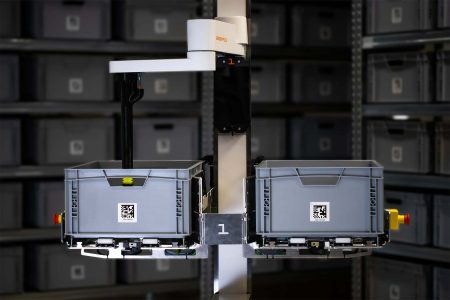Cost of inaction: How not automating can cost your business long-term
It’s common to hear people talk about how expensive it is to automate their supply chain. But have you ever thought about how much it costs your business not to automate?


While concerns around cost, complexity and disruption might hold you back, the truth is inaction can be far more detrimental in the long run. Today’s ultra-competitive market demands lean operations and agile supply chains to navigate volatile volumes, decreased labor availability and rising costs.
Curious to know how delaying automation could be costing your business more in the long-term? Here are 5 ways how inaction is costing your business more in the long-term:
- Increased costs: While businesses are seeing rising costs in everything from rent to transportation, labor remains the highest cost (accounting for 65% of total warehouse opex on average). By not optimizing your biggest expense through automation, you are automatically putting yourself at a long-term cost disadvantage to competitors.
Automating labor-intensive tasks like picking, packing, and sorting can significantly reduce operating costs and increase margins, especially in industries like ecommerce, e-grocery, and pharma.
- Inventory mismanagement: Manual operations are not only expensive, but also prone to error. 62% of retailers cite manual processes and human errors as the biggest cause of inventory and fulfillment issues. By relying on manual labor, you are accepting higher error rates and inferior inventory tracking than your competitors who are using automation.
Automated solutions with real-time inventory tracking and simple workflows can minimize errors and reduce lost inventory in your warehouse, resulting in additional cost savings.
- Lost revenue from poor customer experience: Think of the last time your order arrived several days late, or worse, had the wrong item in it. Slow or inaccurate order fulfillment leads to unhappy customers, high return rates, and even lost future sales. Manual fulfillment makes delivering consistently high customer service more difficult, which places you at a disadvantage to competitors who use automation to increase reliability and consistency.
Automation ensures faster, more accurate fulfillment, which leads to greater customer satisfaction, loyalty, and future sales growth.
- Reduced storage capacity: Manual operations are highly space-inefficient because they are constrained by human limitations. For example, vertical height is limited by how high people can reach, while aisles need to be wide to enable free movement of people or even forklifts (in the case of pallet storage).
By contrast, robots such as Brightpick Autopicker reach taller heights and require much narrower warehouse aisles to navigate. With automation, warehouses can store more inventory in the same footprint, which reduces real estate costs and enables greater product choice for customers.
- Employee dissatisfaction: Warehouse jobs are some of the toughest ones out there. Lots of walking, lifting and carrying can quickly lead to burnout, causing high staff turnover and declining productivity. The cost of replacing an employee can add up to 25% of their annual salary, meaning these costs can quickly add up.
Companies using automation have a much easier time retaining existing employees and attracting and training new ones. The jobs become less physically demanding, more fulfilling, and less stressful.
Most companies view automation as a matter of when, not if. While some businesses can take years to make the first step, nimbler companies such as Dr. Max are using automation to jump ahead of their competition today.
Here’s Tomas Seget, Deputy Director of Logistics at Dr. Max, on why they decided to fully automate their supply chain using Brightpick Autopicker robots.


European pharmacy giant Dr. Max embraces automation:
“Automation is a core part of our DNA. With over 2500 pharmacies across six countries, we recognized early on that manual processes were not sustainable for us long-term.
Managing such a large operation requires a degree of efficiency and consistency that humans can hardly achieve. People inevitably get tired and make mistakes. Picking errors can be especially damaging in our industry, where a single wrong pick can delay critical care for a patient.
Moreover, these days labor is hard to find. Warehouse jobs are physically demanding and, when given a choice, most people prefer other jobs. Labor costs have been a huge headache lately. Plus, the uncertainty of hiring new labor makes long-term planning and growth more difficult.
For these reasons, automation is a strategic priority for Dr. Max.
In our warehouses, we’ve installed everything from mini-loads to conveyors, A-frames and Goods-to-Person AGVs. More recently, we discovered Brightpick Autopicker and became convinced it was the ideal solution for our B and C-movers.
What stood out to us the most was how easy it was to install Brightpick. Software integration and on-site installation took a matter of weeks – in fact, our warehouse manager said it was the easiest automation project he’s ever done!
Automation has brought many benefits to our operation. Brightpick Autopicker enabled us to pick 40% more items from the same footprint, and we’re now thinking of adding additional robots to boost that even more. Faster fulfillment and reduced picking errors have also improved customer satisfaction and inventory tracking. And of course our labor needs have gone down to practically zero, enabling us to reallocate all our manual pickers to quality control instead.
For years, our manual processes were plagued with inefficiencies. Thanks to automation solutions like Brightpick, we now have happier customers and staff, costs under control, and more scalability in our operations. Today, we operate with greater agility, accuracy, and full confidence in our ability to handle future growth.”
Read the full case study here.
Don’t Wait
The cost of inaction is real. By delaying automation, you risk falling behind competitors, compromising operational efficiency, and hindering your ability to meet customer demands.
Ready to embrace the future of fulfillment? Reach out to learn more about Brightpick and how we can optimize your operations.
Get started with Brightpick

